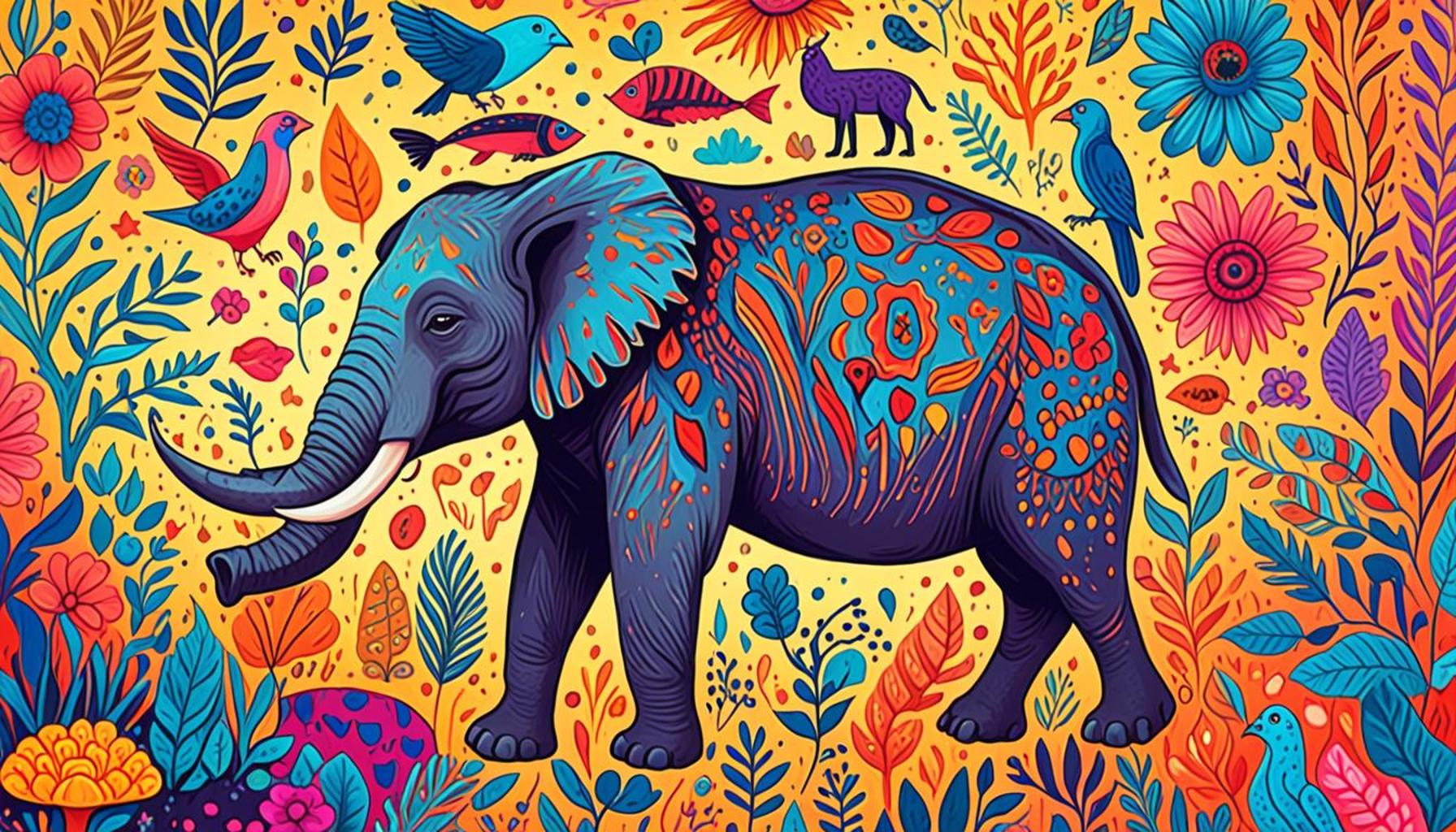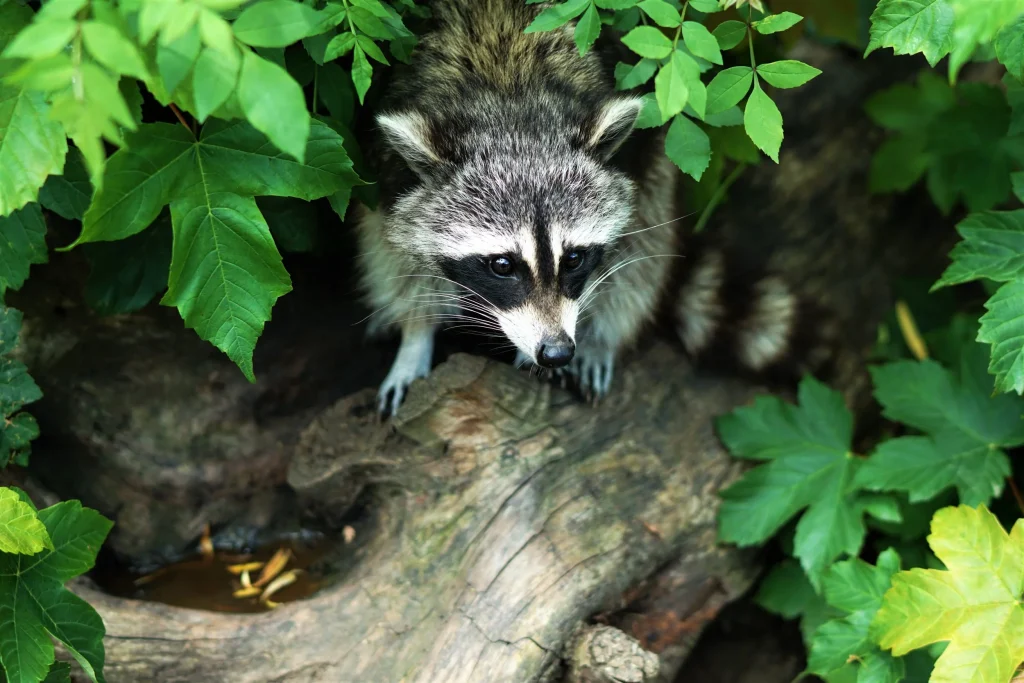How an animal’s life history can influence its behavior

The Intricacies of Life History in Shaping Animal Behavior
The relationship between an animal’s life history and its behavior is a fascinating subject that unveils the ways living creatures adapt to their environments. Each life stage—from birth through maturation to reproduction—plays a critical role in determining how species act and react within their ecological niches. This understanding not only enriches our perception of the natural world but also establishes a foundation for effective wildlife conservation strategies.
One of the essential elements influencing behavior is developmental stages. For many species, the transition from juvenile to adult is marked by significant behavioral shifts. For instance, juvenile cuttlefish are known to exhibit playful behaviors, engaging in activities that resemble ‘playing’ with their environments. In contrast, adult cuttlefish display more strategic behaviors focused on mating and territory defense. These transitions are not merely biological but are intricately linked to survival strategies, suggesting that the environment a young animal grows up in profoundly shapes its future behavior.
Another key factor is life span. Species that are short-lived, such as many species of mayflies, often engage in highly risky behaviors. These behaviors maximize their reproductive output within a limited timeframe, leading them to swarm and mate en masse, often near water sources. On the other hand, long-lived species, like the African elephant, tend to display more caution and social complexity, as there is a greater need to ensure survival over an extended period. The elevated level of risk management among long-lived species offers insights into their social structures and interactions.
Equally intriguing are the reproductive strategies that dictate behavioral norms in various species. Animals such as the California condor, which practice monogamy, demonstrate strong pair bonding behaviors and collaborative parenting, while species like the red-eyed tree frog, which exhibit polygamous mating systems, adopt more variable reproductive strategies. This variability informs not only their mating rituals but also their survival strategies, as establishing and maintaining territories becomes integral for those competing for mates.
For example, the American robin embodies how migratory behavior is intricately tied to life history. The seasonal migrations of robins, driven by their need to forage for food and select optimal breeding habitats, highlight the adaptability of these birds. Their feather molting patterns and dietary choices change with the seasons, reflecting an acute awareness of environmental cues. Such flexibility allows robins to thrive in diverse habitats across North America, from suburban gardens to forest edges.

By examining these connections, researchers can glean crucial insights that contribute to wildlife management and conservation efforts. Understanding animal behavior through the lens of life history enables us to recognize the complex interplay between evolution and ecology, thereby fostering a deeper appreciation for the intricate roles that wildlife play within ecosystems. The study of life histories not only enhances our knowledge of animal behavior but also equips us with the tools to conserve and manage the precious biodiversity that surrounds us.
LEARN MORE: Click here to discover safe usage tips
The Role of Developmental Stages in Behavioral Adaptation
The various developmental stages of an animal’s life can significantly influence its behavior, ultimately shaping its interactions with the environment and other species. From the moment of birth, every stage—infant, juvenile, and adult—presents unique challenges and opportunities that require distinct behavioral adaptations. For example, lions exhibit notably different behaviors based on their age; cubs tend to be playful, engaging in mock hunting, which serves a critical purpose in developing the skills they will need to survive in the wild. Meanwhile, adult lions take on roles that prioritize hunting and territory defense, showcasing a strategic shift as they mature.
This transition is not exclusive to mammals; it can be observed across various classes within the animal kingdom. Take the case of sea turtles: hatchlings face an immediate struggle for survival upon emerging from their nests on sandy beaches. They exhibit frantic behaviors to evade predators as they make their way to the ocean, embodying instinctual actions that are vital for their survival in those early minutes. As they grow, their behaviors evolve from high-risk traversal to those suited for a life spent foraging among reefs and in open seas.
The Influence of Environmental Context
Moreover, the environment in which an animal develops can drastically influence its behavioral outcomes. Animals raised in enriched environments, such as those with ample social interactions and resource availability, may exhibit more exploratory and less fearful behaviors compared to those raised in isolated or resource-scarce settings. This observation has profound implications; for example, domesticated animals like dogs that grow up in a stimulating environment tend to have enhanced social skills and adaptability, positively affecting their relationships with humans and other animals.
The correlation between life history traits and environmental challenges can also be examined through the lens of predation pressures. Species adapted to environments with high predation risk, like young ground-nesting birds, exhibit behaviors such as remaining motionless or camouflage when threatened. These behavioral adaptations underscore the importance of survival strategies that morph with age and environmental demands.
Interestingly, the life history strategy of a species—whether it is a K-selected species prioritizing fewer offspring with higher parental investment, like elephants, or a r-selected species producing many offspring with minimal care, such as fish—directly correlates with their behavioral traits. K-selected species often demonstrate more complex social structures and cooperative behaviors, while r-selected species tend to have higher levels of reproductive competition and risk-taking behaviors due to their shorter lifespans.
- Exploratory behavior: Affected by environmental stimuli, particularly during juvenile stages.
- Social bonding: Illustrated in K-selected species through cooperative caregiving.
- Risk appraisal: Influenced by life history strategy and predation risks perceived during different stages of growth.
This window into the development and environmental context provides a nuanced understanding of how behaviors can change over time, allowing researchers to make informed decisions about conserving and managing wildlife populations. By appreciating the diverse influences of an animal’s life history, we can deepen our comprehension of not only individual species but also their roles within broader ecological systems.
| Aspect of Life History | Influence on Behavior |
|---|---|
| Mating Strategies | Animals often display varying behaviors during mating seasons, influenced by factors such as age and prior reproductive success. For example, older males may adopt more aggressive tactics to secure mates due to competitive experiences from their past. |
| Parental Investment | The level of care given to offspring varies widely and shapes future behaviors. Species that invest heavily in parental care often raise young that exhibit more complex social interactions and learning abilities compared to those with minimal investment. |
Continuing from these points, we explore how a lifetime of experiences variants through individual circumstances can impact survival tactics. For example, the survival instincts of an animal may evolve based on early life threats, shaping their behavior when interacting with predators later in life. It is fascinating how behavioral adaptations can be traced back to distinct life history traits, allowing researchers to examine patterns across species. This understanding opens up opportunities for conservation efforts by predicting how species may adapt or struggle under environmental changes.
DISCOVER MORE: Click here to find the best pet adoption resources
The Impact of Life History Strategies on Social Behavior
Understanding how an animal’s life history can influence its behavior extends beyond merely observing developmental stages; it also involves delving into social structures and interactions that can vary dramatically across species. Social animals, such as wolves and primates, exhibit complex behavioral patterns shaped by their life history strategies, which can define their roles and hierarchies within a group. For instance, in wolf packs, the social dynamics are heavily influenced by the age and reproductive stage of each member. Older, more experienced females often become the dominant figures who lead hunting and decision-making processes, thus exemplifying how the behavioral expectations evolve with age and social context.
Primates offer another insightful context for examining the effects of life history on behavior. Many tree-dwelling species, like capuchin monkeys, display highly social behaviors during their juvenile stages, which extend into adulthood. Their early interactions, enriched by social play, lead to the development of intricate social networks that serve critical functions such as cooperative foraging and conflict resolution. This importance placed on social learning emphasizes the necessity of a nurturing environment early in life to build robust social skills, impacting survival and reproductive success.
Behavioral Flexibility and Environmental Pressures
The capacity for behavioral flexibility is a crucial aspect of an animal’s life history that allows adaptation to changing environments. Bird species like crows illustrate this concept remarkably; known for their intelligence, these birds can shift their behavior based on resource availability. During times of scarcity, they may exhibit more aggressive behaviors to defend their food sources, while in times of abundance, they engage in social caching, where they hide food to retrieve later. Such behavioral flexibility reflects not merely a response to immediate conditions but is also a learned behavior shaped by individual life experiences.
Another compelling example is the otter, specifically the California sea otter, which has seen its behaviors adapt based on the availability of prey, specifically sea urchins. In ecosystems where sea urchins proliferate, otters demonstrate increased foraging and group hunting behaviors to control the population, ultimately maintaining the health of kelp forests. This interplay between life history traits—such as their development from pup to adult—and environmental pressures illustrates the importance of adaptive behavior in response to shifting ecological dynamics.
- Complex social structures: Seen in species like wolves and primates, shaped by hierarchical roles based on age and experience.
- Social learning: Essential in primate juvenile development to enhance future cooperative behaviors.
- Behavioral adaptation: Displayed by crows and otters, showcasing flexibility in response to changing environmental conditions.
The behavioral complexities resulting from an animal’s life history, in conjunction with environmental challenges, reveal a layered tapestry of interaction that merits ongoing study. Insights gained from these observations not only enhance our understanding of animal behaviors but also aid in developing conservation strategies that take into account the unique life histories and social structures of various species.
DIVE DEEPER: Click here to discover essential socialization techniques for your puppy
Conclusion: The Intricate Connection Between Life History and Behavior
In essence, the study of how an animal’s life history can influence its behavior reveals not only the intricacies of individual species but also the evolutionary narratives embedded within them. From the social hierarchies established in wolf packs to the cooperative behaviors seen in primate groups, it becomes evident that an animal’s life stages profoundly shape its interactions and adaptations. The significance of early experiences, such as those observed in capuchin monkeys, demonstrates how formative years can cultivate vital social skills that lead to enhanced survival prospects later in life.
Moreover, the remarkable behavioral flexibility exhibited by species like crows and California sea otters showcases the dynamic interplay between life history traits and environmental pressures. Their ability to adjust behaviors in response to external factors not only highlights their intelligence but also emphasizes the importance of adaptability in navigating ecological challenges. As we consider the complex tapestry of behaviors across the animal kingdom, it becomes clear that behaviors shaped by life histories are vital for ecological balance and species sustainability.
As research continues to unfold, it invites both scientists and enthusiasts alike to explore further into the multifaceted relationships between life history and behavior. Understanding these connections not only enriches our knowledge of wildlife but also aids in promoting effective conservation efforts. Ultimately, recognizing the profound impact of life history on behavior can inspire a deeper appreciation for the intricate web of life that thrives around us.


